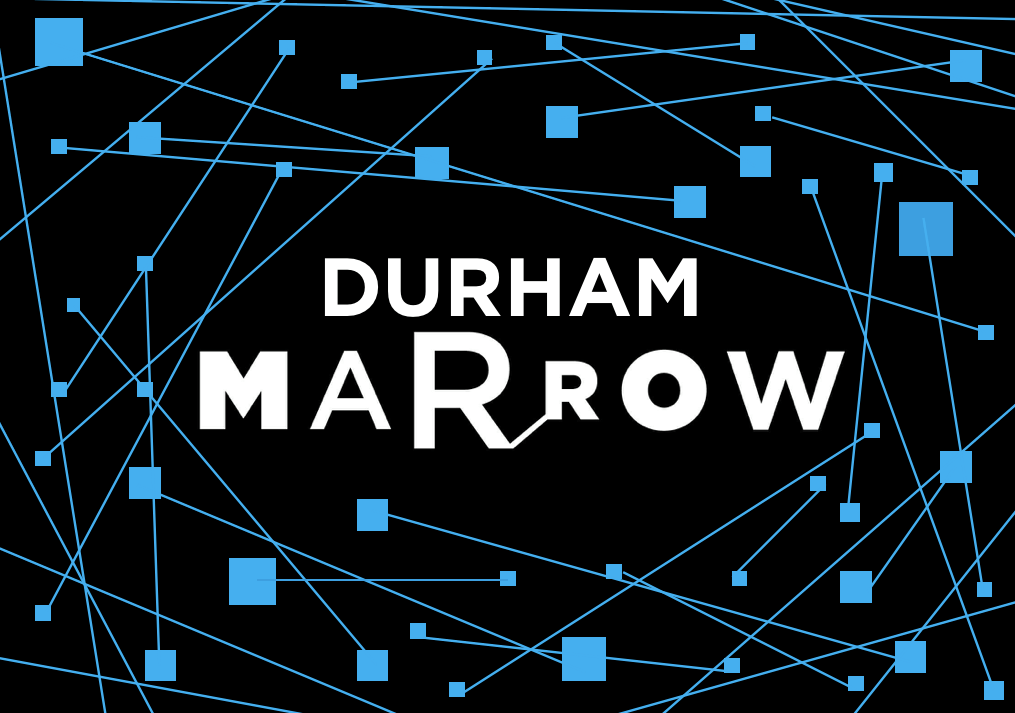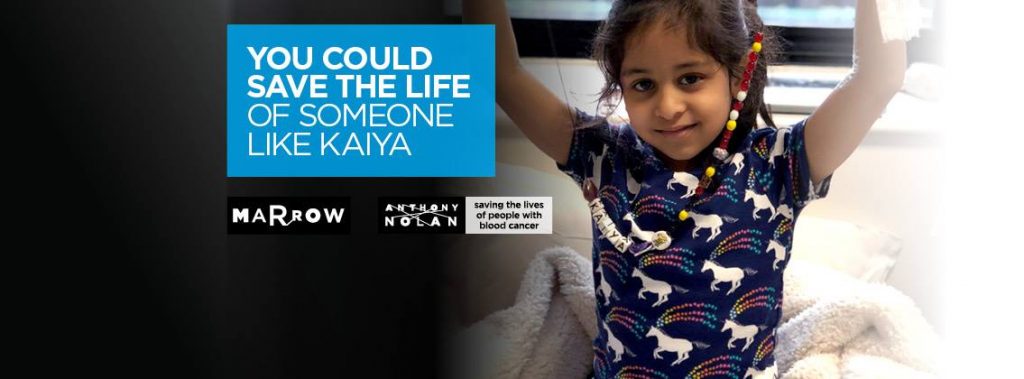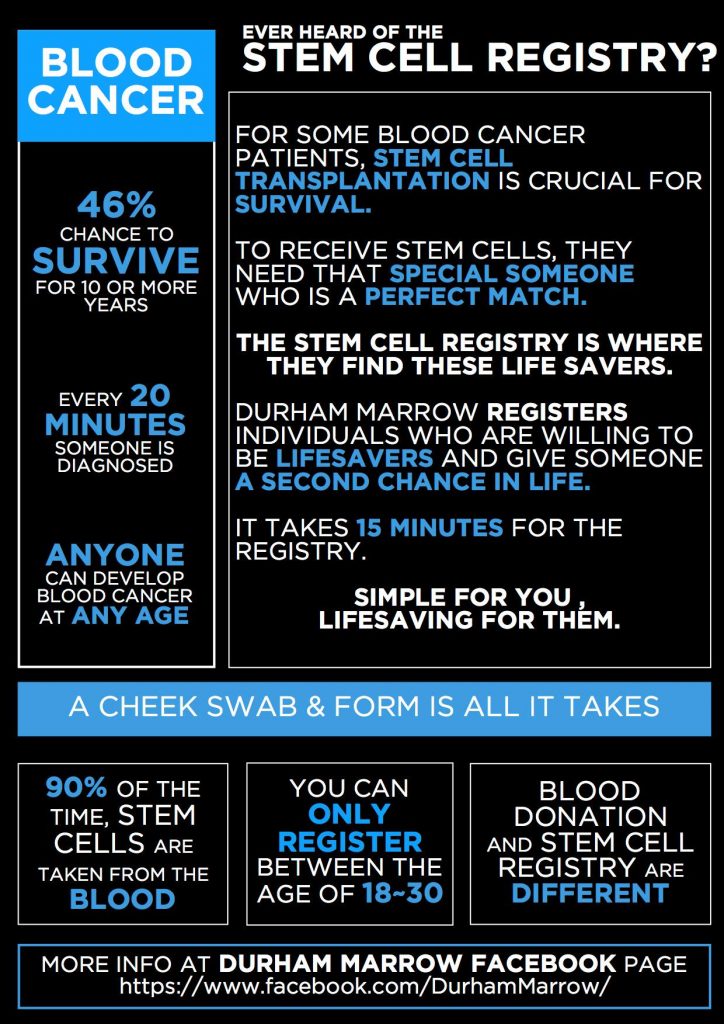15 minutes can be the first step to becoming a lifesaver. Join the Anthony Nolan stem cell register with just a form and a cheek swab at one of Durham Marrow’s events. Once you’re on the register, you could be a match for someone with blood cancer who’s in desperate need of a stem cell transplant. If you’re asked to donate, most of the time the process is similar to giving blood – it can be that easy to give someone a second chance at life. Over 400 people have joined at events in the past year after realising how simple and quick it is, so why not you too?
There seem to be some common myths surrounding what stem cell/bone marrow donation involves, why people need to sign up and who is able to. So we’re about to bust some of those myths right now:
Why can’t their family donate? Someone is diagnosed with blood cancer every 20 minutes. 3/4 of those in need of a stem cell transplant have to rely on a stranger donor, as siblings and other family members may not necessarily be a match. It’s therefore important to have as many people as possible on the register, so that there is a higher likelihood that a suitable donor can be found. Having donor cells which are a ‘match’ is essential to avoid the body fighting the healthy new cells.
But I’ve heard it’s really painful! Another common worry is about how much donating hurts – but anyone who’s been through the procedure says it isn’t crazily painful. To join the register, it just takes a cheek swab and a form. Then, if you’re called up to be a match, 90% of the time the process is a bit like giving blood. You sit for 3 hours or so and the stem cells are filtered from your blood and then your blood (minus some stem cells) is returned to you.
The other donation method is rare, with only 10% of donors needing to donate in this way and this is normally only done if you’re donating to a young child. A general anaesthetic is used for this 30 minute long procedure, after which you wake up with a bruise in the area where the doctors took a bit of bone marrow. Many people have said that afterwards it simply feels like they’ve fallen over on a night out and that this feeling lasts for approximately a week. Both methods are miles away from the scary stories people have told us of what they think happens.
All patients have an equal chance of finding a match. The chances of finding a donor are not the same for everyone – 69% of those of Northern European heritage will get the best match donor, but this number drops to only 20% for BAME (black, Asian and minority ethnicity) patients. This is a fact we want to change – by diversifying the register. Kaiya is only 5 years old and was diagnosed with an aggressive form of acute lymphoblastic leukaemia. Her family have created a huge appeal to get more people with Indian heritage on the register, who are more likely to be a match to her.
I’m still not too sure about donating cells… 1/4 of those who go on to donate from the Anthony Nolan register were signed up as students at events such as the ones Durham Marrow host. and There is about a 1 in 100 chance of donating after signing up. As much as stats are great, they do not often tell the whole picture. Each one of the people in need of a transplant have real lives, friends and families. Many of us on the exec of Durham Marrow, and Marrow groups at other unis across the country, have personal reasons as to why stem cell donation is so important to them. We would do anything to help our own families, but could you imagine if a family member was reliant on a stranger – one who might not even turn up? Would you want that special stranger to help? You could be that person.
Drop by for 15 minutes to fill in the form and give a #cheekyswab. You could save a life.
Laura Congreve, Durham Marrow President
St Marys – 7th June 5-6.30pm, Marys JCR
Swab for Kaiya/Chads – 9th June 10.30am-1pm, Chad’s main entrance
Festival of Sport Swabbing – 13th June 10.30am-4pm, MC entrance
Trevs – date/time tbc
Like the Durham Marrow page for updates and check out the Facebook events for more details.



